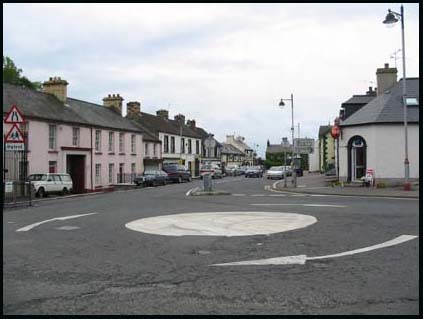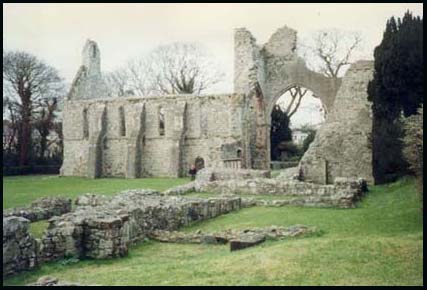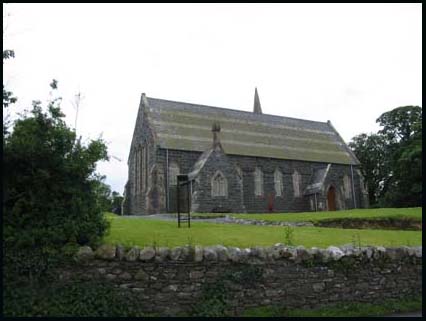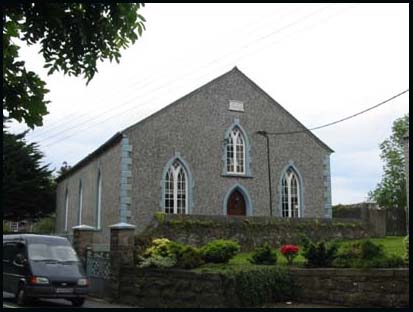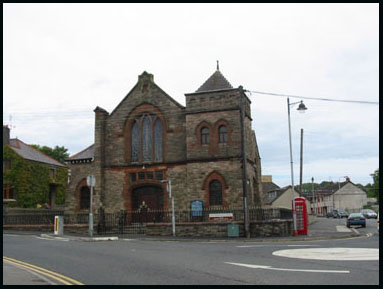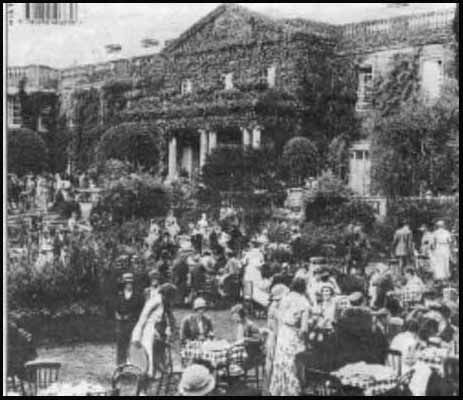|
The town of Greyabbey
near the shores of Strangford Lough
King Charles 1st granted it a port with pilotage & anchorage
& the export of all commodities except yarn but by 1834 only
infrequent coal vessel moored there. Sir James Hamilton granted
the area to Hugh Montgomery in 1618 and by 1659 the population
of the parish was only 117 people. In 1764, the parish population
was 1550 with 97% Presbyterians (MOA p22)
In 1834 the village consisted of one main street about 500 metres
long leading from the shore and two short ones. There were 138
one-storey houses , all slate roofed & 27 two-storey houses,slated.
There was a row of new, stone, ground floor houses on either side
of the street but even with back doors, the slops and dirt were
still flung into the road. There were 7 grocers, 25 spirit shops,
1 bootmaker, 1 doctor, 2 woollen drapers and the fairs were 28th
March & 29th October. There was a school
for males & females near the church and one policeman but
the petty sessions were held in Kircubbin. Most inhabitants were
weavers with linen cloth made in large quantities. The village
was neither lighted nor paved. It was in a hollow and not visible
till approached very close. The woods of Rosemount demesne screen
it on the south and east.
In 1836 there was a water mill & 2 windmills in the parish.
The 3 commonest surnames in this parish were Brown, Bailie and
Hamilton showing Scottish lowlands immigration. (LR2003p6). There
was a National School , Police Barracks & Petty sessions House
in the villlage in 1863.
In 1910 the district population was 563 people (POD)
Newspaper articles from Northern Star;
meeting of inhabitants 9 Jan 1793
Newspaper articles from Down Recorder;
tobacco smuggling 17 Feb 1838; Slate quarry notice 29 May 1858;
brawling in church 21 Aug 1858; brawling case 9 Jun 1860; melancholy
suicide 11 Jul 1874
Newspaper article from Newtownards Independent;
letter on 12th July celebrations 20 Jul 1872+
Newspaper articles from Newtownards Chronicle;
Spelling Bee 16 Oct 1875; pyrotechnic display 26 Aug 1876; new
police barracks 15 Apr 1882; graveyard question 1 Mar 1884; shore
bailiff drowned 21 Jul 1888; homicide at Greyabbey 7 Mar 1991;
manslaughter case 27 Jun 1891; formation of Unionist Club 11 Mar
1893;amateur concert 22 Apr 1893; grand concert 27 Jan 1894; Athletic
sports at Greyabbey 14 Nov 1896.
|
